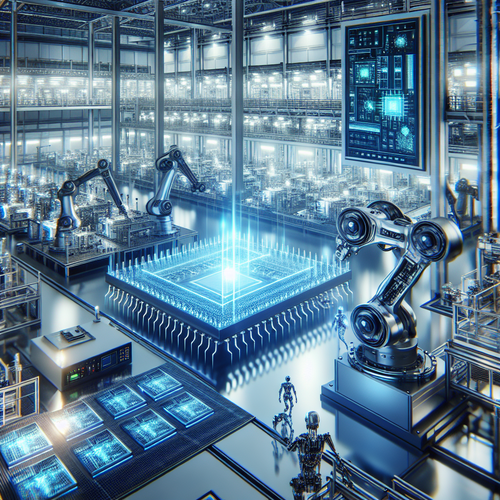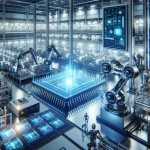
Investment in AI-Optimized Photonic-Chip Manufacturing Facility
Investment in AI-Optimized Photonic-Chip Manufacturing Facility
The rapid development of technology has brought about significant changes in various sectors, and the manufacturing of photonic chips is at the forefront of this evolution. This tutorial explores the importance of investment in AI-optimized photonic-chip manufacturing facilities, the benefits such investments offer, and a step-by-step guide to understanding this emerging field.
Prerequisites
- A fundamental understanding of semiconductor technology.
- Knowledge of artificial intelligence and its applications in manufacturing.
- Familiarity with the photonic industry’s role in technological advancements.
Why Invest in AI-Optimized Photonic-Chip Manufacturing?
Photonic chips utilize light instead of electric signals to transmit information, providing faster data transfer rates and lower energy consumption compared to traditional electronic chips. Recent advancements in AI technologies have allowed for the optimization of the manufacturing processes involved in creating these chips, leading to a host of benefits:
- Increased Efficiency: AI can improve manufacturing precision, leading to less waste and higher yields.
- Cost Reduction: By streamlining the production process, companies can reduce overall costs associated with labor and materials.
- Faster Development Cycles: AI-driven analytics can enhance the design phase, allowing companies to innovate faster.
- Meeting Market Demands: There is a growing need for faster and more efficient data processing, particularly in sectors like telecommunications and computing.
Step-by-Step Guide to Investment
Step 1: Market Analysis
Before investing in a photonic-chip manufacturing facility, conduct thorough market research. Understand the current landscape of the photonics market, identify key players, and assess potential competitors. It’s essential to evaluate the demand for photonic chips across various industries.
Step 2: Develop a Business Plan
Create a detailed business plan outlining your objectives, strategies, and expected outcomes. Include financial projections and funding requirements. A robust plan will serve as a roadmap for your investment.
Step 3: Secure Funding
Investment in manufacturing facilities often requires significant capital. Explore various funding options, including venture capital, government grants, and private investors. Highlight the benefits of investing in AI-optimized manufacturing to attract potential investors.
Step 4: Collaborate with Experts
Engage with industry experts and academic institutions specializing in photonics and AI. Collaborations can lead to innovative solutions and insights that might enhance your manufacturing process.
Step 5: Set Up the Facility
Design your manufacturing facility to include AI and automation technologies. This can include robotics for assembly, AI for quality assurance, and software for workflow optimization.
Step 6: Invest in Talent
Hire professionals with expertise in AI, photonic technologies, and manufacturing processes. Continuous training and development will be crucial in keeping your workforce updated on the latest technologies.
Troubleshooting Common Issues
- Supply Chain Delays: Establish strong relationships with suppliers and create a diverse supply chain to minimize disruptions.
- Quality Control Problems: Implement AI-driven quality assurance systems to identify defects quickly and enhance product reliability.
- Labor Shortages: Invest in employee retention strategies and create an appealing workplace culture to attract and keep top talent.
Summary Checklist
- Conduct thorough market analysis.
- Develop a detailed business plan.
- Secure funding through various channels.
- Collaborate with industry experts.
- Design an optimized manufacturing facility.
- Hire and train skilled workforce.
- Implement robust quality assurance measures.
In conclusion, the investment in AI-optimized photonic-chip manufacturing facilities represents a strategic move in an increasingly competitive tech landscape. By following the steps outlined above, businesses can position themselves to capitalize on this innovative technology, ultimately leading to enhanced productivity and economic growth. For more insights on related topics, consider reading about Investment in Manufacturing & R&D Jobs for Semiconductor & AI Supply Chain.














